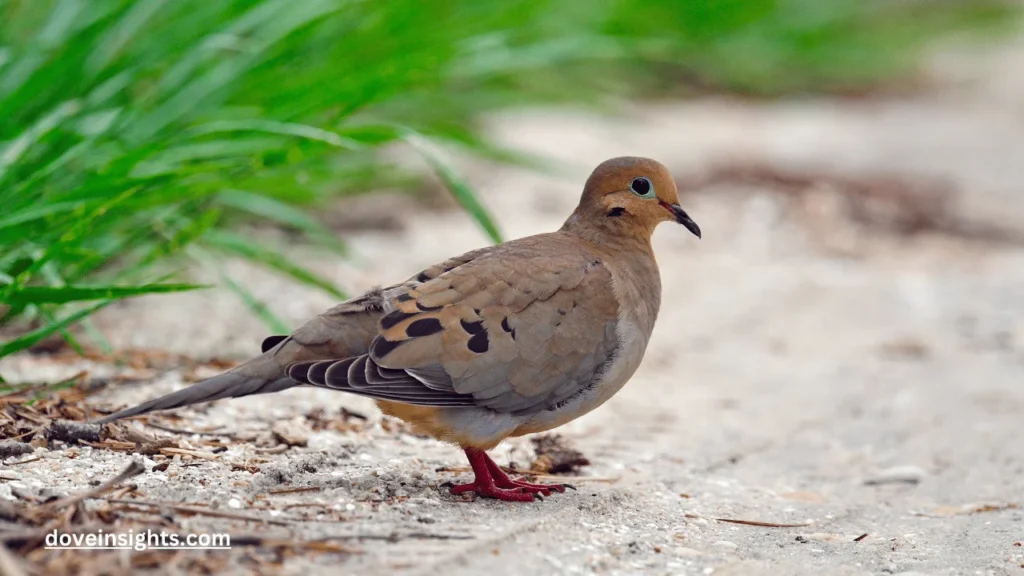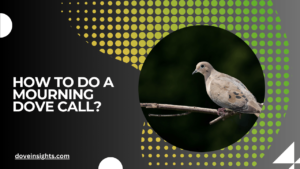If you’ve ever heard the soft, melancholic coo of a mourning dove drifting through the air, you know how instantly recognizable this bird is. Its peaceful presence often evokes a sense of serenity and calm, but there’s more to the mourning dove than its soothing sound.
Have you ever wondered where these graceful birds came from? What part of the world do they call home, and how did they spread across North America?
The mourning dove, with its distinctive call and gentle demeanor, is one of the most common birds in the United States, but its origins might surprise you.
In this article, we’ll explore the historical and ecological journey of the mourning dove, uncovering the origins, migration patterns, and the factors that contributed to its widespread presence today.
Whether you’re a birdwatcher, nature lover, or just curious about the creatures in your backyard, understanding the mourning dove’s history will give you a deeper appreciation for this remarkable bird.
Contents
The Mourning Dove’s Origins in North America
The mourning dove, scientifically known as Zenaida macroura, is native to North America. It’s believed that these birds originated in the southern United States and parts of Mexico.
Fossil records suggest that the mourning dove’s ancestors were part of the family Columbidae, which includes pigeons and doves, and they evolved from birds that lived in North America millions of years ago.
Historically, mourning doves have been widespread across the continent, particularly in the southern regions of the U.S. and Mexico.
Their adaptability to various habitats, including open woodlands, grasslands, and even urban areas, allowed them to thrive across diverse ecosystems. Geographic isolation may have played a key role in the development of different populations of mourning doves, each with slight variations, but the species as a whole originated in North America.
Migration and Spread Across North America
Mourning doves are known for their migratory habits, though not all populations migrate. Northern populations of mourning doves generally migrate southward in the winter to avoid the harsher cold temperatures.
These migratory patterns have played a significant role in the spread of mourning doves across North America.
Over time, as human development and agricultural expansion created ideal habitats for the mourning dove, the species began to spread from its original range. Open farmlands and grassy fields provided ample food sources for mourning doves, allowing them to expand into regions that were previously inhospitable.
The mourning dove’s ability to adapt to urban environments also helped it spread, as cities and towns provided more feeding opportunities and nesting spaces.
The expansion of mourning doves across North America, from the southern U.S. to Canada, is a testament to the bird’s resilience and flexibility in response to changing landscapes.
Ecological Factors That Shaped the Mourning Dove’s Range
The mourning dove’s ability to thrive across diverse habitats can be attributed to several ecological factors.
Climate plays a key role in determining where mourning doves live. They prefer temperate regions with mild winters, which is why they are most abundant in the southern United States and parts of Mexico.
However, the adaptability of the mourning dove has allowed it to survive in more northern areas, where it migrates to escape the winter chill.
The availability of food is another crucial factor that has influenced the mourning dove’s distribution. These birds primarily feed on seeds, including grasses, weeds, and cultivated grains, making agricultural fields and open meadows ideal habitats.
Additionally, their ability to thrive in suburban and urban environments has allowed mourning doves to coexist with humans, using bird feeders and gardens as additional food sources.
The Role of Human Activity in the Spread of Mourning Doves
Human activity has played a significant role in both the conservation and expansion of mourning dove populations. Over the centuries, as settlers moved westward across North America, they cleared land for farming, creating vast expanses of open fields and agricultural land.
This shift in the landscape allowed mourning doves to thrive, as these habitats were perfect for their feeding and nesting needs.
Moreover, bird conservation efforts in the 20th century helped protect mourning dove populations from significant declines. While mourning doves were once heavily hunted, today, they are protected under U.S. federal law.
These conservation measures, coupled with habitat restoration projects, have helped maintain stable populations across the continent. Today, mourning doves are often seen in suburban backyards and city parks, a clear sign of how well they’ve adapted to human-modified environments.
The Global Reach of Mourning Doves

While mourning doves are native to North America, they have spread to other parts of the world, particularly in areas with climates similar to their native habitats. Introduced populations can be found in parts of Hawaii, where they were brought in by humans in the 19th century.
However, the mourning dove’s success outside North America is limited compared to its thriving presence on the continent.
In contrast to other dove species that are found across a wider range of continents, the mourning dove’s spread outside North America remains relatively modest. Its expansion, though, has been significant across the U.S., Canada, and Mexico.
In recent decades, the mourning dove has become one of the most widespread and common birds in North America, found in forests, deserts, wetlands, and cities alike.
Conclusion:
The mourning dove’s origins are rooted deeply in North America, but its journey across the continent tells a fascinating story of adaptability, resilience, and ecological balance.
From its beginnings in the southern U.S. and Mexico, the mourning dove has spread far and wide, thriving in a variety of habitats thanks to its ability to adapt to changing environments and take advantage of new food sources.
Today, mourning doves are a familiar sight across much of North America, from rural farmlands to urban neighborhoods.
Their expansion is a result of both natural migration and human influence, with conservation efforts helping ensure their presence in modern times.
Understanding the origins and history of mourning doves not only provides insight into their behavior and habitat preferences but also gives us a deeper connection to the natural world around us.
FAQ’s
Where did mourning doves originate?
Mourning doves are native to North America, specifically the southern United States and parts of Mexico.
Do mourning doves migrate?
Yes, mourning doves are migratory birds. Northern populations typically migrate southward for the winter, while southern populations remain year-round.
Why are mourning doves so widespread in North America?
Mourning doves have adapted well to various habitats, including agricultural fields, grasslands, and urban areas, which has allowed them to thrive across North America.
Did human activity influence the spread of mourning doves?
Yes, human activities such as land clearing for farming and the creation of urban areas have significantly expanded the habitats available for mourning doves, contributing to their widespread distribution.
Are mourning doves found outside North America?
While they are primarily native to North America, mourning doves have been introduced to parts of Hawaii, but their presence outside North America is limited.
What habitats do mourning doves prefer?
Mourning doves prefer open woodlands, grasslands, and agricultural fields. They can also adapt to urban and suburban environments.








